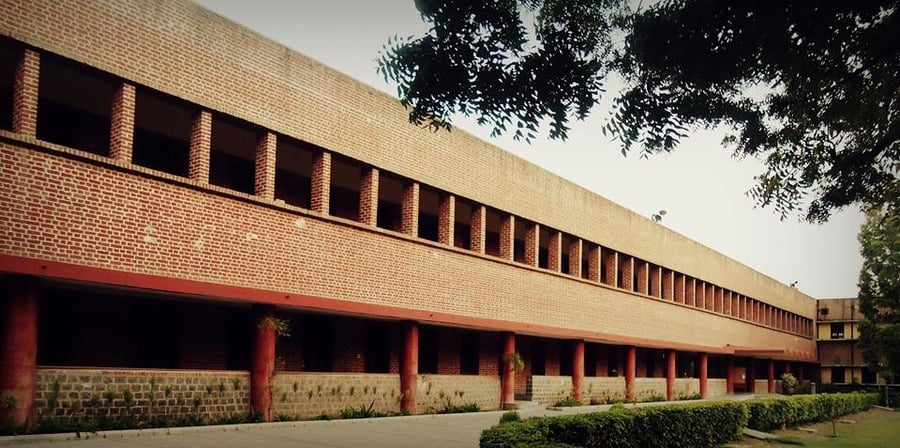The 2006 movie The Prestige opens up with a Michael Caine monologue. He says “Every great magic trick consists of three parts or acts. The first part is called “The Pledge”. The magician shows you something ordinary: a deck of cards, a bird, or a man. He shows you this object. Perhaps he asks you to inspect it to see if it is indeed real, unaltered, normal. But of course… it probably isn’t. The second act is called “The Turn”. The magician takes the ordinary something and makes it do something extraordinary. Now you’re looking for the secret… but you won’t find it, because of course you’re not really looking. You don’t really want to know. You want to be fooled.”
It is almost astonishing how beautifully this depicts the Indian circumstance as PM Narendra Modi, our very own magician, time and again transfers the utopian ideas of national integration, poverty eradication, and the emancipation of the socially, culturally, and economically marginalised on obscure and complex economic policies sugarcoated with his renowned grandiloquence, ingenious analogies, novel symbolisms, hyperboles, and signature abbreviations. The latest midnight reform from the Parliament came with similar pomp and show, riding on the indomitable optimism of Finance Minister Arun Jaitley and Modi himself, with their personal promises of grassroot and inclusive economic prosperity. It is only to be seen whether the nation already once scathed by the hardships of demonetisation finally finds relief in the messiah’s new trick or it further faces despair and confusion.
Touted by a section of Indian media as the greatest economic reform since Independence after the 1990 Manmohan Singh reforms, a critical examination of this big bang reform reveals the ramifications of demonetisation and raises serious questions over whether a volatile economy like India will be able to cope with such complex market structures. It is an inevitable analysis at this juncture – will this new policy makes lives easier or is just another one of Modi’s stunts because this man can clearly not keep himself off the front page.
Two things should be made clear at the very onset. Firstly, the GST (Goods and Service Tax) is not at all as simple or as utopian as Arun Jaitley and Narendra Modi want us to believe. The BJP, or for that matter any party in India, is at its core a political venture of giant financial houses. Expecting any all-out pro-poor reform would therefore just be unrealistic. Secondly, this reform is not at all an exemption from taxation but rather a distribution of tax from goods of basic survival to the first level goods of comfortable living. It is amply relevant that the different slabs ranging from 5% to 28% are specifically designed to pinch the pockets of the Indian middle class. Clearly, the Indian economy, already mortgaged to the western capitalist institutions in its years of corrupt Congress misrule, has found its new victim in the extensive middle class base. This new policy thus may be seen as a new venture of the government to further appease America.
The government released documents that reveal that the policy is aimed to make the tax incidence on consumers less by reducing compliance costs, removing cascading of taxes, increasing the tax base, reducing logistical costs, and reducing the effective rates of taxes from the present level. The new system is supposed to eliminate India’s notorious complex layers of taxation including purchase, entertainment, excise, luxury and sales taxes (VAT), and others, tackling corruption and inflation at the same time. Even a passing knowledge of the peculiar nature of the Indian economy will reveal the lacuna in every part of the government’s envisioned objectives.
First and foremost, the unorganised sector of India’s economy is vast, employing an estimated nine out of ten workers. When this sector – where the nature of employment is fragile, irregular, and voluminous – is subjected to 37 filings every year including three filings a month added to a jargon of technicalities, the manpower absorption and gross production is significantly reduced. For smaller companies operating on wafer-thin margins, hiring accountants and technical staff could substantially dent their bottom line. This would all lead to zero transference of the added profit to the customers, which in turn only leads to a further increase in prices.
Second, until corruption as a way of life is promoted by the regime, and its supporters and patrons are allowed a free play to evade taxes and plunder national resources, the reform will merely be regressive and atrocious for the giant middle class base, consuming a higher proportion of poor people’s income, compared to those earning large incomes.
Third, the GST will continually pose a threat to the federal setup of the nation and may create unnecessary friction between the states and the centre. This all culminates into the fact that the very fundamental idea of the GST seems to be flawed. It is hard to imagine the practicality of a “one nation one tax” programme when every state in India has its own economic weaknesses, strengths, and challenges.
Once again, the general masses bear witness to a hasty policy which is forced upon them. In the absence of sufficient preparation, infrastructure, resources, knowledge, and compliance across the nation, India once again looks like a class of weak students who are forced to face tough examinations one after another, without the guidance of an expert teacher.
Sources:
- Economic Survey of India
- Government of India official Goods and Service Tax (GST) website.
- Modern Diplomacy Archives
Feature Image Credits: Quora
Nikhil Kumar
[email protected]









